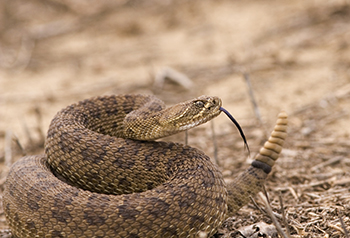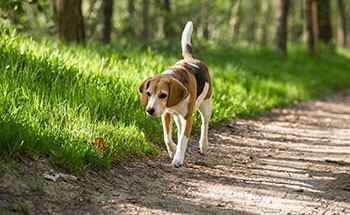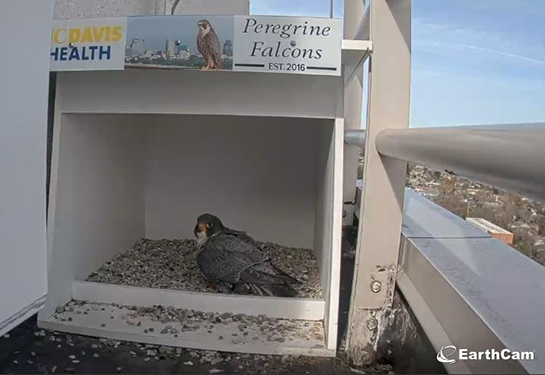Don’t tread on it!
Top tips for staying safe during rattlesnake season
Dry, hot conditions are only just beginning in California. But the weather is already causing rattlesnakes and other animals to seek water sources such as rivers, creeks and even backyards.

Being aware of your surroundings and knowing how to respond when encountering a rattlesnake is the key to avoiding a dangerous rattlesnake bite.
“We typically see 10-15 rattlesnake bites in the hospital each year, along with 300-400 cases managed through the California Poison Control System,” said James Chenoweth, an emergency department physician at UC Davis Health who specializes in medical toxicology. “This year, so far, poison control has received about 120 calls, and I’ve consulted on two cases in the past month or so.”
Most rattlesnake bites occur between the months of April and October. Chenoweth and his poison control colleagues often field calls from emergency medical personnel and community physicians who want advice about treating rattlesnake bite victims.
While the odds of being bitten by a rattlesnake are small, following some precautions outdoors, people can minimize the chances of being bitten and suffering severe or even life-threatening symptoms.
Chenoweth says the best tip is to simply avoid any contact with a snake, even if it looks dead.
“The bite reflex can stay intact and there are reports of venom being injected even by decapitated rattlesnakes,” added Chenoweth, who mentioned seeing videos online showing snakes still able to bite after death. “Parents should teach their children to not handle snakes, even if they don't think they are venomous.”
Top tips to prevent rattlesnake bites
- Wear boots and long pants when hiking
Never go barefoot or wear sandals when walking in areas where you cannot clearly see where you are placing your feet. Wearing hiking boots and long pants offers an extra layer of protection from unexpected encounters with a rattlesnake. These barriers, however, will not provide complete protection against a bite.
- Stay on trails when hiking, away from underbrush and tall weeds
Snakes can rest almost anywhere that is hidden from view and enables them to hide from predators, avoid extreme temperatures and hunt for prey. Because trails tend to have fewer hiding places for snakes, they offer a level of protection for you. Brush offers protection for snakes. Stay on trails to avoid potentially disturbing a rattlesnake in hiding.
- Do not touch or disturb a snake, even if it appears dead
Snakes use their hidden position to strike and kill their prey by surprise. Don’t mistake their apparent stillness as a safe opportunity to investigate. Even freshly killed snakes may still be able to bite.

Protect dogs and other animals from being bitten by a rattlesnake. Ask your veterinarian about rattlesnake anti-venom and vaccines, and immediately contact your veterinarian if your animal has been bitten.
- Always look for concealed snakes before picking up rocks, sticks or firewood
Since rattlesnakes are often well-camouflaged and wait quietly for prey, they can be difficult to see. Piles of rocks or logs, patches of dense shrubs, and expanses of tall grasses are just few of the places where snakes may seek shelter. Carefully inspect logs or rocks before picking them up or sitting down to avoid accidentally disturbing a rattlesnake.
- Never hike alone in remote areas. Always have someone with you who can assist in an emergency
Having a hiking partner is important to help in a crisis, especially in a situation where you or your hiking partner is bitten by a snake. If safe to do so, have your hiking partner photograph the snake so that identification can be made to aid in treatment.
- Teach children to respect snakes and to leave them alone.
Curious children who pick up snakes are frequently bitten. Teach them always to give snakes the right of way to prevent snake bites.
If someone is bitten by a rattlesnake
- Get immediate medical attention, as severe or even life-threatening symptoms may occur within minutes after the bite, or in other cases may begin after couple of hours.
Rattlesnake bites can produce extreme pain and swelling at the location of the bite, excessive bleeding, nausea, swelling in the mouth and throat making it difficult to breathe, lightheadedness, drooling, and even collapse and shock in rare cases.
- Do not apply ice, do not use a tourniquet or constricting band, do not try to suck out the venom, and do not use any device to cut or slice the bite site.
Constricting blood vessels near a rattlesnake bite can lead to amputation. Wash the wound with soap and water, and remove wristwatches, rings on fingers or anything constrictive.
- Keep calm, try to avoid exertion, and keep the affected extremity below heart level until you can be transported to a medical facility.




